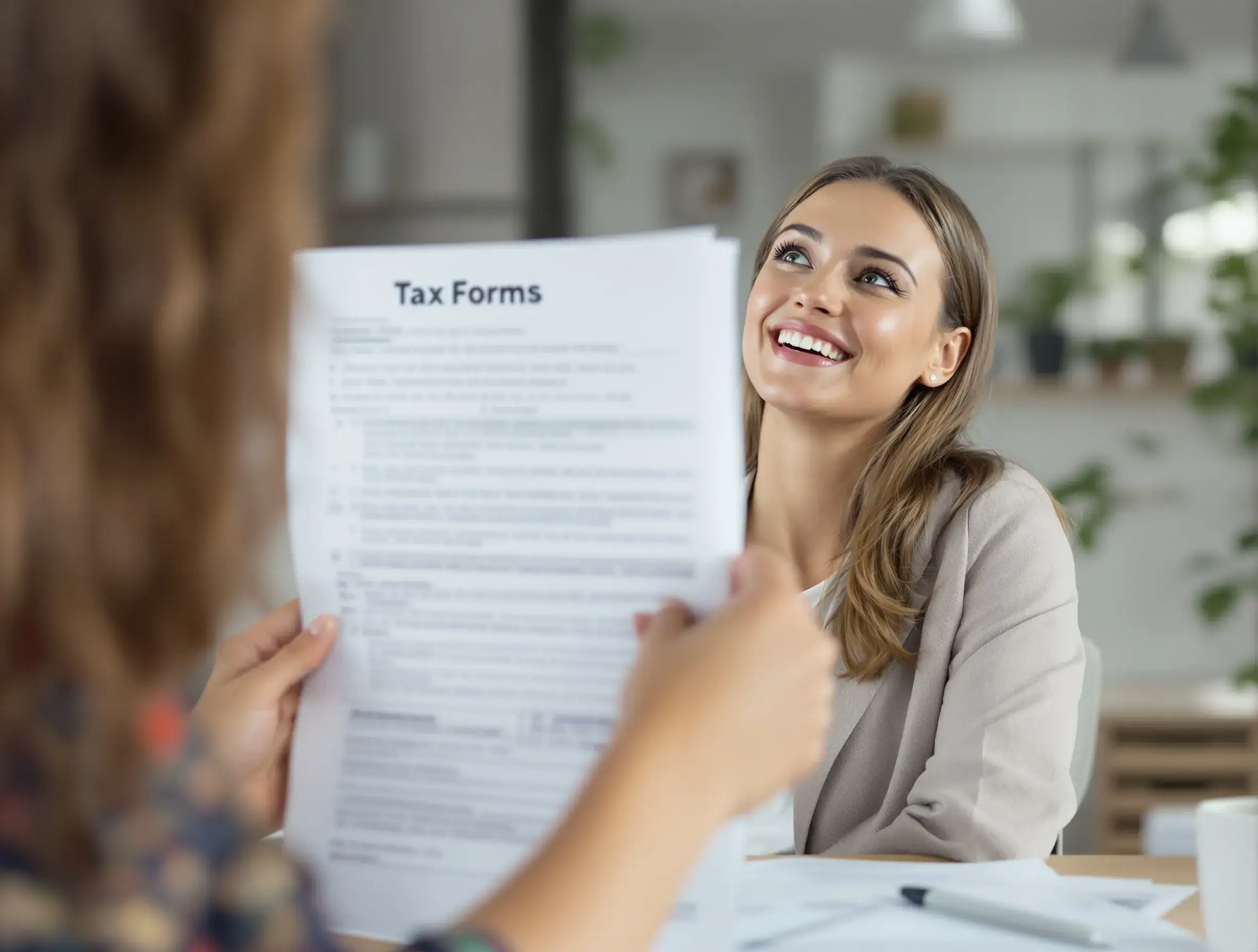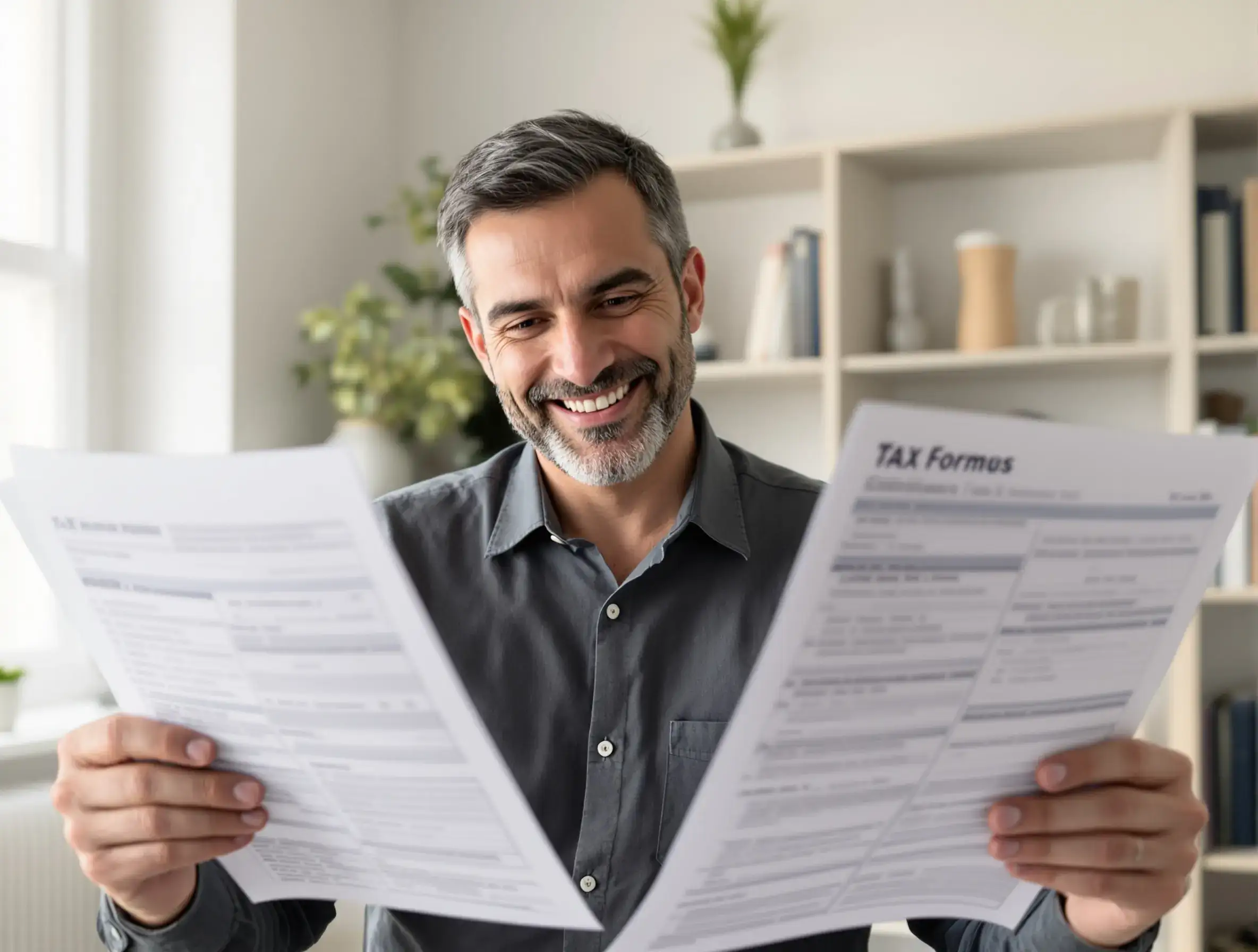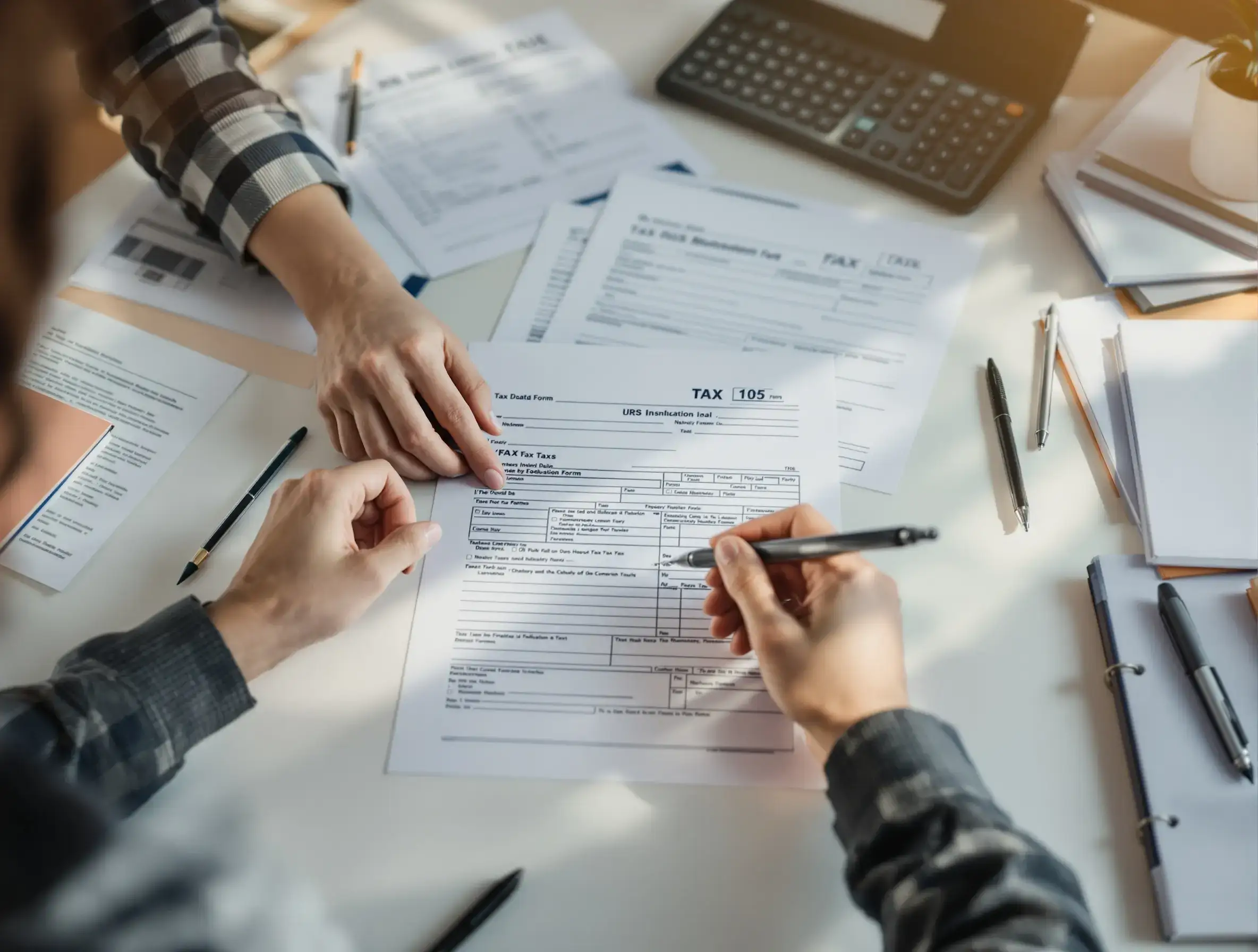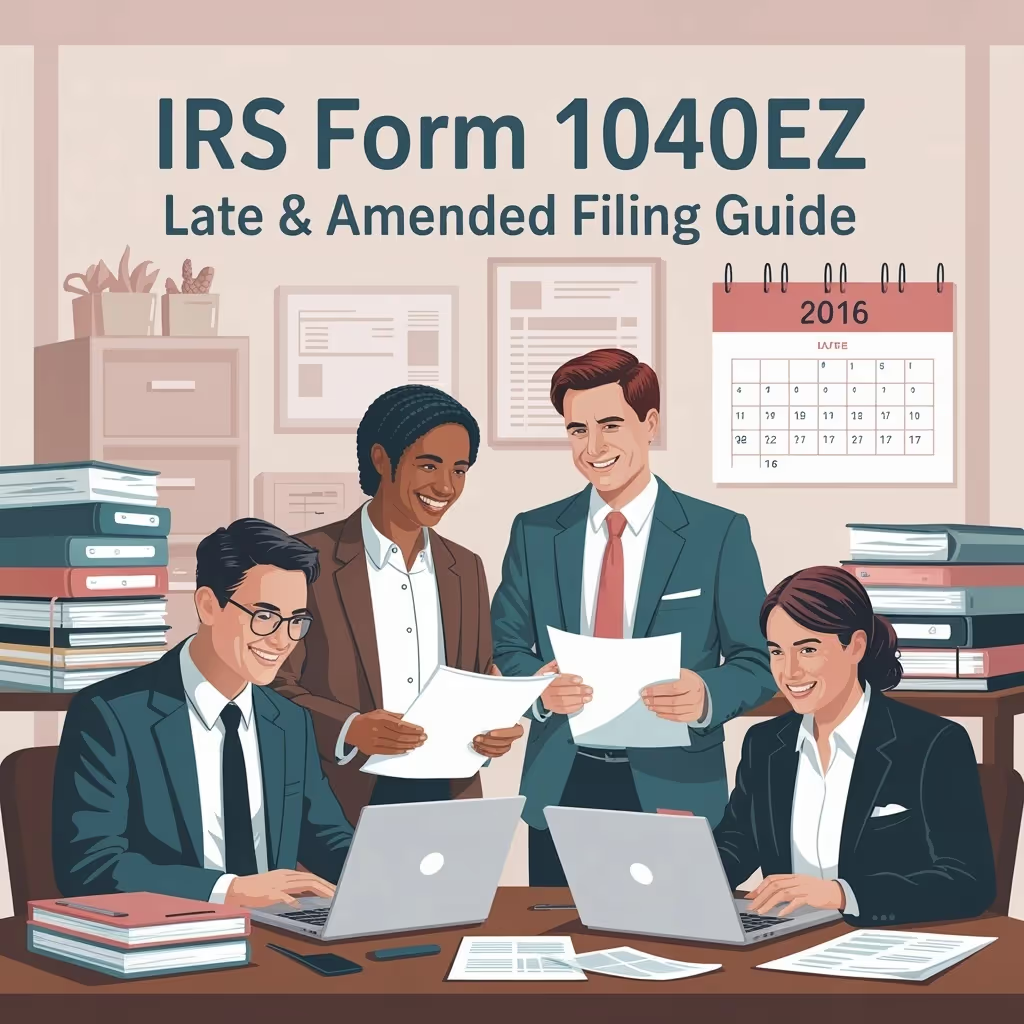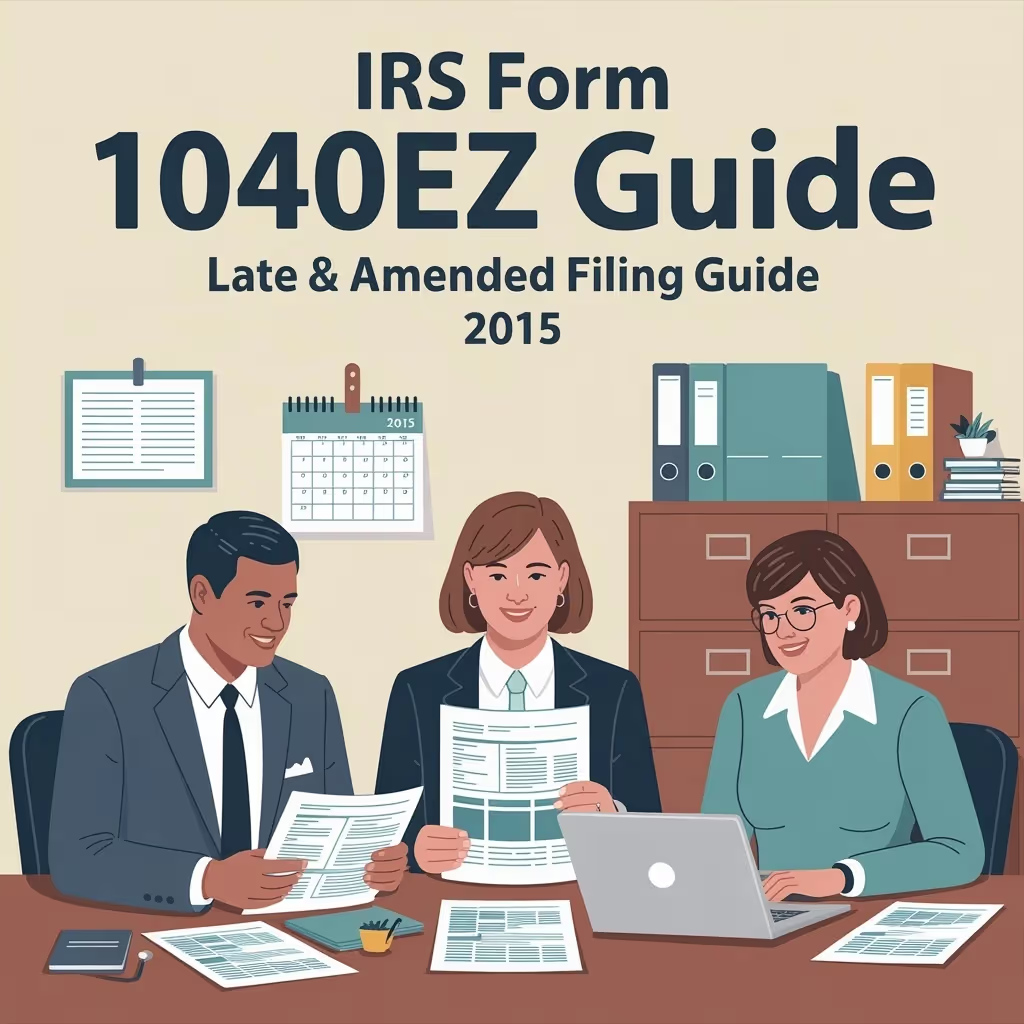IRS Form 1040EZ (2017): Late & Amended Filing Guide
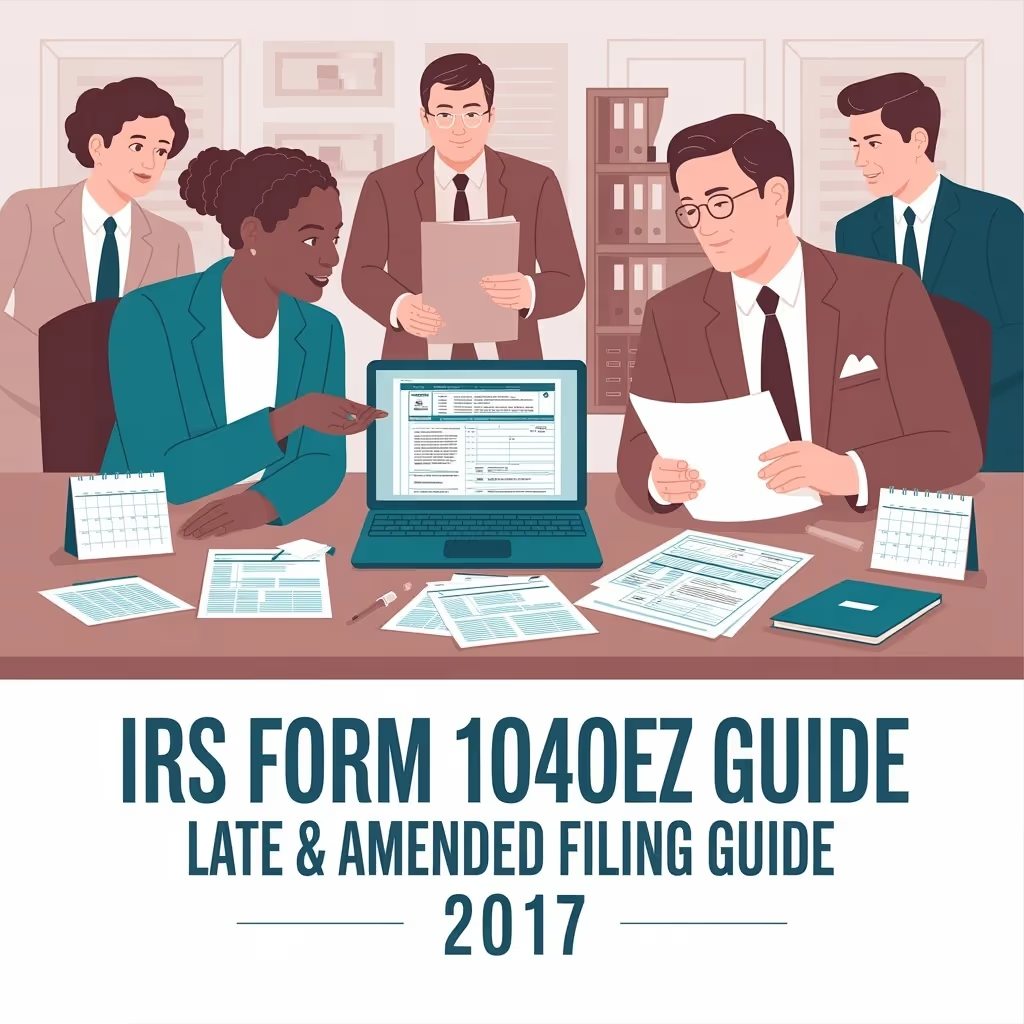
What IRS Form 1040EZ (2017) Is For
IRS Form 1040EZ (2017) was designed for taxpayers with simple income tax situations, no dependents, and taxable income under $100,000. It applied to single or married filing jointly filers under age 65. This was the final year the IRS used the 1040EZ form, which was replaced by the redesigned Form 1040 starting in the 2018 tax year.
This version of the federal income tax return allowed only limited refundable credits, such as the Earned Income Tax Credit. It excluded adjustments for estimated tax payments, itemized deductions, or most other income tax credit options.
When You'd Use Form 1040EZ for 2017 (Late or Amended Filing)
You would use Form 1040EZ (2017) for a late or amended filing if you did not file your original tax return or need to correct errors. Filing taxes late can result in a failure-to-file penalty, a late-payment penalty, and interest charges on unpaid taxes. You may also receive an IRS notice about a missing federal return or tax owed from a prior tax year.
Common reasons to file include discovering eligibility for the Earned Income Tax Credit, reporting previously unreported income, or responding to IRS penalties. Although tax refunds for 2017 expired on April 17, 2021, affected taxpayers still need to file their tax return to remain compliant with the law. The IRS charges interest daily on unpaid balances, so filing late reduces the total cost.
Key Rules Specific to 2017
The 2017 tax year had higher Earned Income Tax Credit (EITC) limits. Taxpayers earning less than $15,010 ($20,600 for married filing jointly) could qualify. Certain affected taxpayers in disaster areas received penalty relief and could use 2016 income to calculate the 2017 Earned Income Tax Credit.
Other rules included:
- Refundable credits: Only the Earned Income Tax Credit was allowed on Form 1040EZ.
- Child Tax Credit: Those claiming the Child Tax Credit had to use Form 1040 instead.
- Filing method: The IRS required paper filing since e-file was unavailable for prior tax years.
- Payment method: Tax payments could be made by check, bank account transfer, or money order.
- Eligibility: Self-employed taxpayers and those with complex deductions are not eligible to use this form.
Step-by-Step (High Level)
- Gather transcripts: Request wage and income transcripts for the 2017 tax year at IRS.gov/transcript before filing.
- Complete Form 1040EZ (2017): Use only the official 2017 version from IRS.gov to avoid processing delays.
- Verify eligibility: Confirm your filing status, income limits, and ensure your taxable interest is under $1,500.
- No schedules required: Form 1040EZ is self-contained and simple to complete.
- Mail the return: Paper filing is required. Check the IRS website for the correct mailing address and due date.
- Keep copies: Save your completed tax return, payment records, and income documents in case the IRS charges additional penalties.
Learn more about Form 1040EZ and other simplified individual returns to better understand late or amended filing options.
Common Mistakes and How to Avoid Them
- Using the wrong form: You must be single or married filing jointly, under age 65, with no dependents, and have an income of under $100,000.
- Claiming ineligible credits: You cannot claim the child tax credit, premium tax credit, or other refundable credits on this form.
- Incorrect income reporting: Only wages, tips, unemployment compensation, and taxable scholarships are allowed.
- Filing late: Missing the April tax deadline results in a failure-to-file penalty of 5% per month and a late-payment penalty of 0.5% per month. The IRS charges interest on unpaid taxes until they are paid in full.
- Using the wrong payment method: Pay by bank account transfer, money order, or check.
- Not paying taxes owed: If your tax bill remains unpaid, the IRS may charge additional penalties and interest.
To avoid penalties, file your return as soon as possible. If you cannot pay in full, apply for a payment plan or an installment agreement. The IRS determines eligibility and may grant penalty relief for reasonable cause, such as illness, family emergencies, or financial hardship.
What Happens After You File
Paper-filed returns from the prior tax year typically take six to eight weeks to process. If you owe taxes, the IRS will issue an IRS notice showing your balance, interest rate, and minimum penalty.
If the tax bill remains unpaid, the IRS charges interest and additional penalties until the balance is paid in full. The failure to file penalty and failure to pay penalty continue each month until payment is made. You can apply for a payment plan or an installment agreement to make monthly payments from your bank account.
Paying late adds interest charges and may result in further penalties. Filing late but paying something immediately helps reduce total costs. The IRS also offers penalty relief if you can prove reasonable cause.
If you disagree with an IRS adjustment, you generally have 30 days from the date on the notice to appeal. Filing even if you owe tax shows compliance and stops larger penalties from accruing.
FAQs
Can I still get a refund for my 2017 taxes?
No, refund claims for the 2017 tax year expired on April 17, 2021. You must still file your return if you owe tax, but any tax refund from that year can no longer be issued.
Will I owe penalties for filing my 2017 return late?
Yes, filing late triggers IRS penalties, including the failure-to-file penalty and the late-payment penalty. The IRS charges interest daily on unpaid tax until full payment is made.
How do I pay my 2017 tax bill?
You can pay by bank transfer, money order, or check. Payment options are available on IRS.gov. Always look for the locked padlock icon on payment pages to confirm security.
What if I am unable to pay the full amount I owe?
File your return to stop the higher filing penalty. You can request a payment plan or an installment agreement. The IRS may offer penalty relief if you have a reasonable cause for paying late.
Can I e-file a 2017 return?
No, you cannot electronically file or e-file a 2017 federal return. You must mail your paper return to the appropriate IRS address listed in the instructions.
What if Form 1040EZ does not fit my situation?
If you are ineligible due to age, dependents, or income type, you must use Form 1040A or Form 1040. These forms support more refundable credits and deductions.
For more resources on filing or understanding prior-year IRS forms, visit our Form Summaries and Guides Library.









